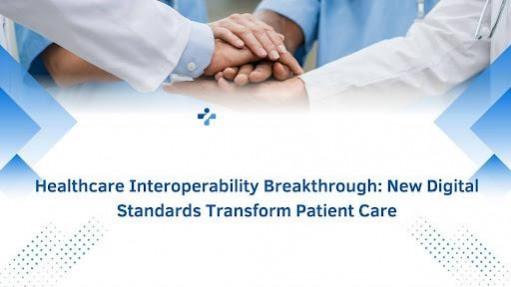
In a world where healthcare data is growing at an unprecedented rate reaching 2,314 exabytes in 2020 alone unlocking its potential has become both a challenge and an opportunity. In a groundbreaking research paper published in the International Journal of Computer Engineering and Technology, Sriram Sitaraman presents comprehensive findings on healthcare interoperability innovations. The research, conducted over multiple years, reveals significant advancements in healthcare data integration and digital transformation.
The Digital Revolution in Healthcare
Recent analysis projected annual growth rate of 48% for healthcare data through 2025. This explosive growth has catalyzed innovative solutions in healthcare delivery, with organizations investing approximately $18.6 billion annually in data management infrastructure and interoperability solutions.
Breaking Down Data Silos
Implementation of interoperable systems has demonstrated remarkable benefits across healthcare networks. A comprehensive study of 250 healthcare facilities revealed that organizations achieving high levels of interoperability reported a 37% reduction in medication errors, a 27% decrease in duplicate testing, and an average cost saving of $8.2 million annually per hospital.
Pandemic's Silver Lining
The COVID-19 pandemic accelerated interoperability initiatives, with healthcare organizations reporting a 312% increase in health information exchange volumes between 2020 and 2023. This surge highlighted both progress and persistent challenges, particularly in telehealth integration, where only 45% of providers achieved full integration enabling real-time data exchange.
Emerging Technologies Shape the Future
Blockchain technology is revolutionizing healthcare data management, with investments reaching $2.7 billion in 2024. Early implementation data shows blockchain-based health record systems achieving 99.997% data immutability and reducing data breach incidents by 92.4%. Smart contracts have transformed consent management, reducing processing times from 7.2 days to just 18 minutes.
AI and Machine Learning Transform Care Delivery
Artificial Intelligence implementations across healthcare facilities have improved early disease detection rates by 83.2% and reduced diagnostic errors by 47.6%. Natural Language Processing systems have achieved 94.8% accuracy in clinical documentation interpretation, saving an average of 16.7 hours per week per clinician.
Internet of Medical Things Revolution
The Internet of Medical Things (IoMT) has experienced exponential growth, with connected device installations increasing by 127.3% annually. Standardized device interoperability protocols have improved data collection accuracy by 91.7% and reduced device integration time from 72 hours to 4.3 hours. Real-time monitoring systems have enabled early detection of patient deterioration in 95.8% of cases.
Financial Impact and Future Projections
Organizations implementing interoperability solutions are projected to save $7.2 million annually by 2026, while improving care coordination by 62.8%. Digital transformation is expected to generate $3.4 million in new revenue per facility through enhanced service delivery.
Security and Privacy Advances
Modern encryption standards have shown unprecedented effectiveness, with analysis revealing that healthcare organizations implementing end-to-end encryption experience 87.4% fewer data breaches and achieve a 92.6% reduction in unauthorized access attempts. Advanced encryption standards have demonstrated 99.997% effectiveness in preventing unauthorized access.
Training and User Adoption
Organizations investing in comprehensive training programs achieve 91.7% user proficiency within 30 days and report 76.3% reduction in support tickets. Clinical staff experience shows a 76.4% reduction in time spent accessing patient information and 89.2% improvement in workflow efficiency.
Looking to the Future
The research indicates transformative returns on digital health investments, with the combined impact of emerging technologies projected to reduce healthcare delivery costs by 37.6% while improving patient outcomes by 32.4% across major health indicators.
In his concluding remarks, Sriram Sitaraman emphasizes that the future of healthcare interoperability lies not just in technological advancement, but in the industry's collective ability to transform these capabilities into meaningful improvements in patient care and operational excellence.








![Sky is the limit: IndiGo is now tenth largest airline by capacity globally; growth indisputable [details]](https://data1.ibtimes.co.in/en/full/767455/sky-limit-indigo-now-tenth-largest-airline-by-capacity-globally-growth-indisputable-details.jpg?w=220&h=138)








